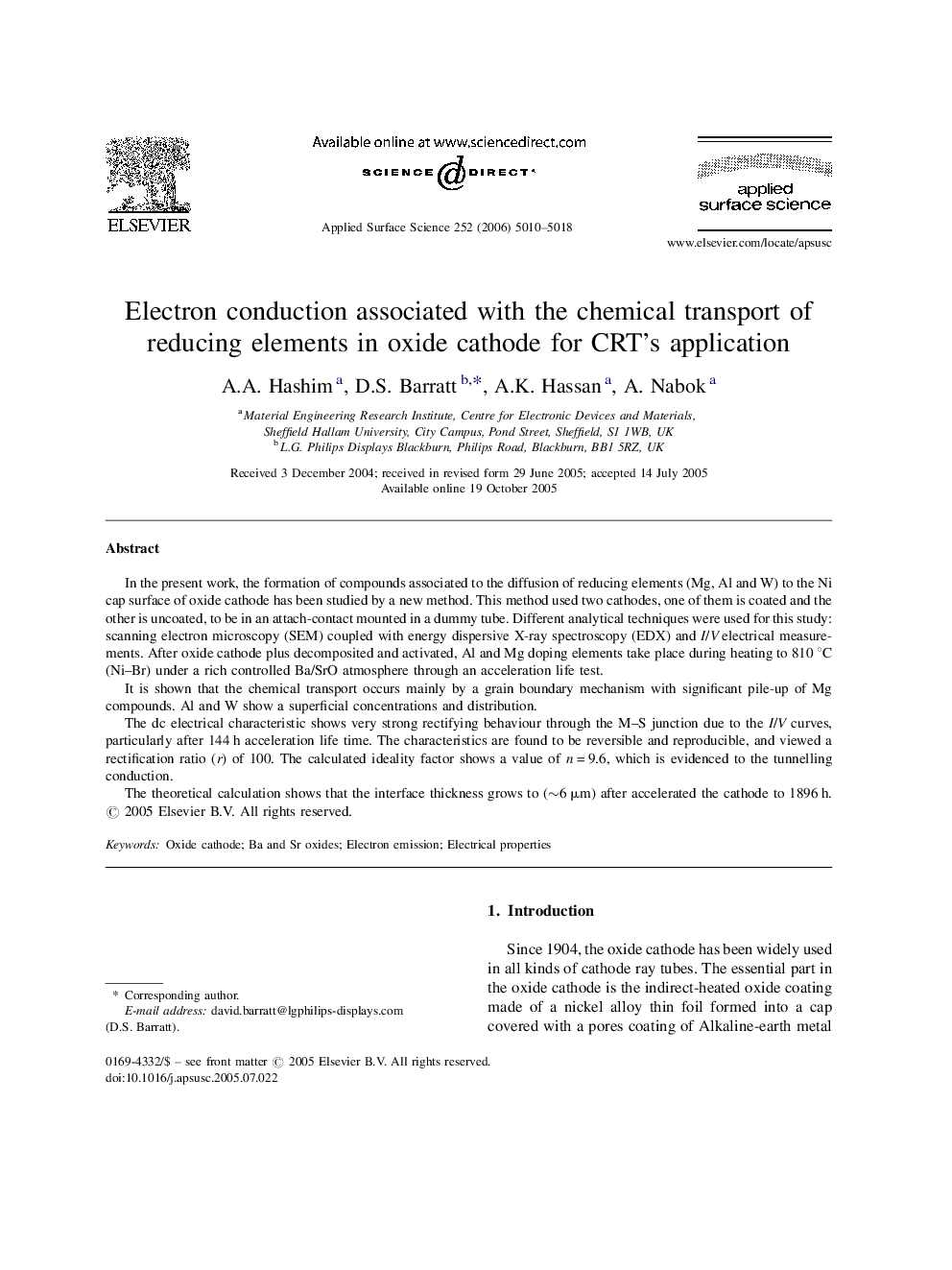| Article ID | Journal | Published Year | Pages | File Type |
|---|---|---|---|---|
| 5369101 | Applied Surface Science | 2006 | 9 Pages |
In the present work, the formation of compounds associated to the diffusion of reducing elements (Mg, Al and W) to the Ni cap surface of oxide cathode has been studied by a new method. This method used two cathodes, one of them is coated and the other is uncoated, to be in an attach-contact mounted in a dummy tube. Different analytical techniques were used for this study: scanning electron microscopy (SEM) coupled with energy dispersive X-ray spectroscopy (EDX) and I/V electrical measurements. After oxide cathode plus decomposited and activated, Al and Mg doping elements take place during heating to 810 °C (Ni-Br) under a rich controlled Ba/SrO atmosphere through an acceleration life test.It is shown that the chemical transport occurs mainly by a grain boundary mechanism with significant pile-up of Mg compounds. Al and W show a superficial concentrations and distribution.The dc electrical characteristic shows very strong rectifying behaviour through the M-S junction due to the I/V curves, particularly after 144 h acceleration life time. The characteristics are found to be reversible and reproducible, and viewed a rectification ratio (r) of 100. The calculated ideality factor shows a value of n = 9.6, which is evidenced to the tunnelling conduction.The theoretical calculation shows that the interface thickness grows to (â¼6 μm) after accelerated the cathode to 1896 h.
